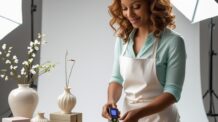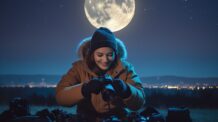Pets are more than animals — they’re family. Photographing pets is a rewarding challenge that lets you freeze their personality, playfulness, and presence in beautiful images. But unlike human models, pets rarely follow instructions, hold a pose, or sit still.
In this guide, you’ll learn how to capture stunning pet portraits that highlight emotion, personality, and connection, whether you’re working with your own pet or a client’s beloved companion.
Understand the Pet’s Personality First
Before you start snapping photos, take a few minutes to observe the pet’s behavior. Are they calm and relaxed or energetic and curious? Understanding their personality helps you anticipate movements and choose the right style for the shoot.
If the pet is shy, start slowly and give them time to get comfortable. If they’re playful, embrace the action and plan to shoot in burst mode to catch peak moments.
Choose the Right Location
The location should suit the pet and help them feel safe and at ease.
Indoor sessions:
- Great for cats or shy dogs
- Use natural window light or soft artificial lighting
- Remove clutter and distractions from the background
Outdoor sessions:
- Ideal for energetic dogs or active animals
- Early morning or golden hour gives the best natural light
- Use familiar locations like a backyard, park, or trail
Always prioritize safety. If shooting near roads or crowds, keep the pet leashed or harnessed.
Use Natural Light Whenever Possible
Soft, diffused natural light works best for pet photography. It brings out the texture of fur, catches sparkle in the eyes, and avoids harsh shadows.
Tips for using natural light:
- Place the pet near a large window for indoor shots
- Avoid direct overhead sunlight that creates unflattering shadows
- Golden hour provides warm, flattering tones and soft light
If indoors and using artificial light, bounce it off a wall or ceiling to soften it.
Focus on the Eyes
Just like in portrait photography, the eyes are the soul of the photo. Sharp, expressive eyes connect the viewer to the pet’s personality.
Tips for perfect focus:
- Use single-point autofocus and place the point on the eye
- Shoot at eye level or below for more engaging compositions
- Keep shutter speed fast enough to freeze small movements
Even if the rest of the image is slightly soft, sharp eyes make the photo feel alive.
Use a Fast Shutter Speed
Pets move — a lot. To capture crisp action or avoid blur, use a fast shutter speed.
Recommended settings:
- 1/250s for calm pets or posed shots
- 1/500s to 1/1000s for active pets or outdoor movement
- Burst mode (continuous shooting) helps you catch the perfect expression or jump
A wide aperture (f/1.8 to f/4) can help keep ISO low while allowing more light and background blur.
Capture a Variety of Angles and Moments
Don’t just shoot one pose and stop. Get creative and move around your subject.
Try:
- Close-ups of the face or paws
- Wide shots showing the environment
- Action shots (running, jumping, playing)
- Details like fur texture or quirky expressions
- Owner and pet together for emotional portraits
Changing angles helps you tell a more complete story.
Use Props or Toys to Engage the Pet
Props can make the session more fun and help show the pet’s personality.
Try using:
- Favorite toys or treats
- Blankets, baskets, or pet beds
- Seasonal accessories (bandanas, flowers, costumes if the pet is comfortable)
Toys are especially helpful for drawing attention to the camera or capturing playful energy.
Keep the Session Short and Positive
Pets have short attention spans, so don’t push too long. End the session on a high note with praise, treats, and play.
Tips:
- Work in short bursts with breaks in between
- Reward calm behavior with treats
- Stay patient and flexible — the best moments often come unexpectedly
Happy pets make better models.
Edit with Care
When editing pet portraits, aim to enhance rather than over-process.
Basic edits:
- Brighten shadows on darker fur
- Adjust white balance for natural tones
- Sharpen the eyes gently
- Remove distractions from the background
Preserve fur texture and natural colors. Avoid filters that distort the pet’s appearance.
Bonus: Photograph Pets with Their People
Including the owner in a few shots adds emotional depth and tells a deeper story of connection.
Tips for people-and-pet portraits:
- Capture candid moments like snuggles or play
- Focus on hands holding paws, hugs, or shared glances
- Keep the posing relaxed and natural
- Let interactions guide the shoot rather than forcing poses
These images often become the most meaningful to pet owners.
Final Thoughts
Photographing pets requires patience, playfulness, and quick reflexes — but the reward is capturing moments that matter. Whether you’re documenting your own furry friend or building a pet photography business, the key is to focus on emotion, connection, and the little details that make each animal unique.
Keep it fun, be flexible, and let the pet lead. The best pet portraits come from understanding the subject and celebrating the joy they bring.




Deixe um comentário